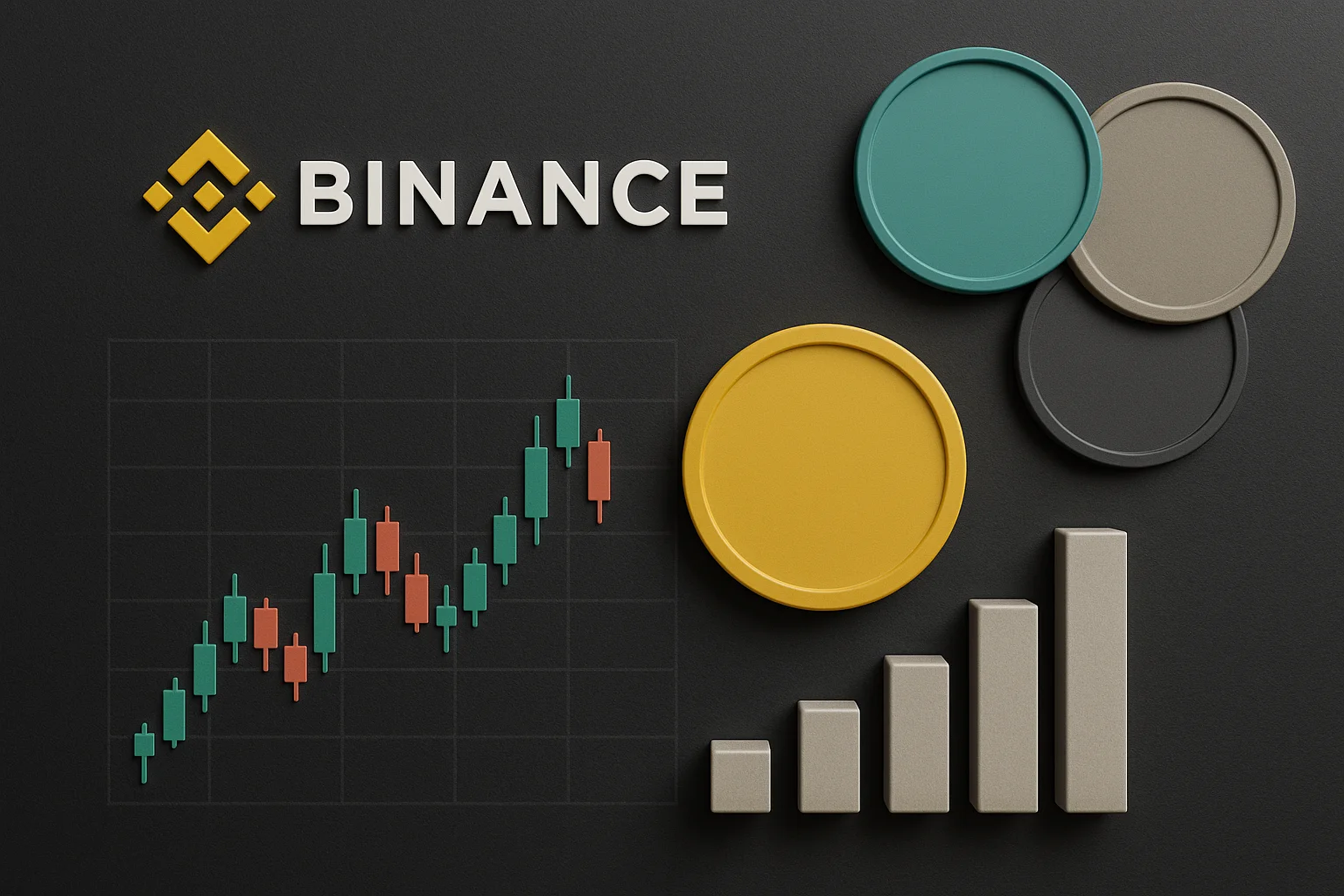News
Altcoin News
Altcoin News
Browse all Altcoin related articles and news. The latest news, analysis, and insights on Altcoin.
Payment Giant Visa Has Launched Stablecoin Advisory Services
Visa is extending its global payment infrastructure presence to the stablecoin sector. The company announced the creation of a new "stablecoin consulting" unit for banks, fintech companies, traders, and large-scale businesses. Located within Visa Consulting & Analytics, this new structure aims to help organizations evaluate their stablecoin strategies, identify the right use cases, and plan technical implementation processes.Visa's move coincides with a period of rapid growth in the stablecoin market. The total stablecoin market capitalization has exceeded $300 billion. According to the company's own data, the annualized volume of stablecoin settlements conducted through Visa infrastructure reached $3.5 billion as of November 30. This shows that stablecoins are no longer just a tool exclusive to the crypto ecosystem, but have become a payment layer actively adopted by traditional finance.What is the scope of the consulting service?The new consulting service covers comprehensive topics such as training programs, market analysis, strategy development, use case modeling, and technical support. Visa aims to reduce the uncertainties that organizations may face when integrating stablecoins into their products or operations. Carl Rutstein, Global Head of Visa Consulting & Analytics, emphasized that having a comprehensive stablecoin strategy has become critical in the digital finance world, and expressed his pleasure in supporting clients in adapting to this rapid transformation.The first users of the consulting service include US-based Navy Federal Credit Union, Pathward, and VyStar Credit Union. Navy Federal is evaluating how stablecoins can be integrated into its overall payment strategy for approximately 15 million members. On the Pathward side, bank management states that the analysis and recommendations provided by Visa have produced concrete and implementable results. This feedback reveals that Visa's consulting model is not limited to theoretical frameworks but directly touches on business processes.The new initiative is a continuation of Visa's stablecoin efforts, which have accelerated in recent years. The company conducted settlement trials with Circle's USDC stablecoin in 2023 and today supports over 130 stablecoin-linked card programs in more than 40 countries. They are also testing stablecoin-based cross-border payments via Visa Direct, a system that allows qualified businesses to pre-fund and make direct transfers to users' stablecoin wallets. Stablecoins are often described as the "first real use case" for crypto due to their low cost and fast transfer capabilities. Over the past year, they have been used more intensively by both individual users and institutions for payments, commerce, and money transfers. Traditional financial institutions are also closely following the competition in this area. Banks like JPMorgan are accelerating instant and cross-border settlements with tokenized deposits, while payment giants like Visa and Stripe are integrating stablecoins into their systems for cheaper and more efficient money transfers. The clarity provided on the regulatory side also supports this momentum. The GENIUS Act, which came into effect in the US in July, created a federal framework for stablecoin issuance and regulation, establishing significant trust for banks and fintech companies. Analysts believe the market still holds considerable growth potential. Citi predicts the stablecoin market could reach $1.9 trillion by 2030, with more optimistic scenarios suggesting it could rise to $4 trillion. Standard Chartered, meanwhile, points to a market size of $2 trillion by 2028.
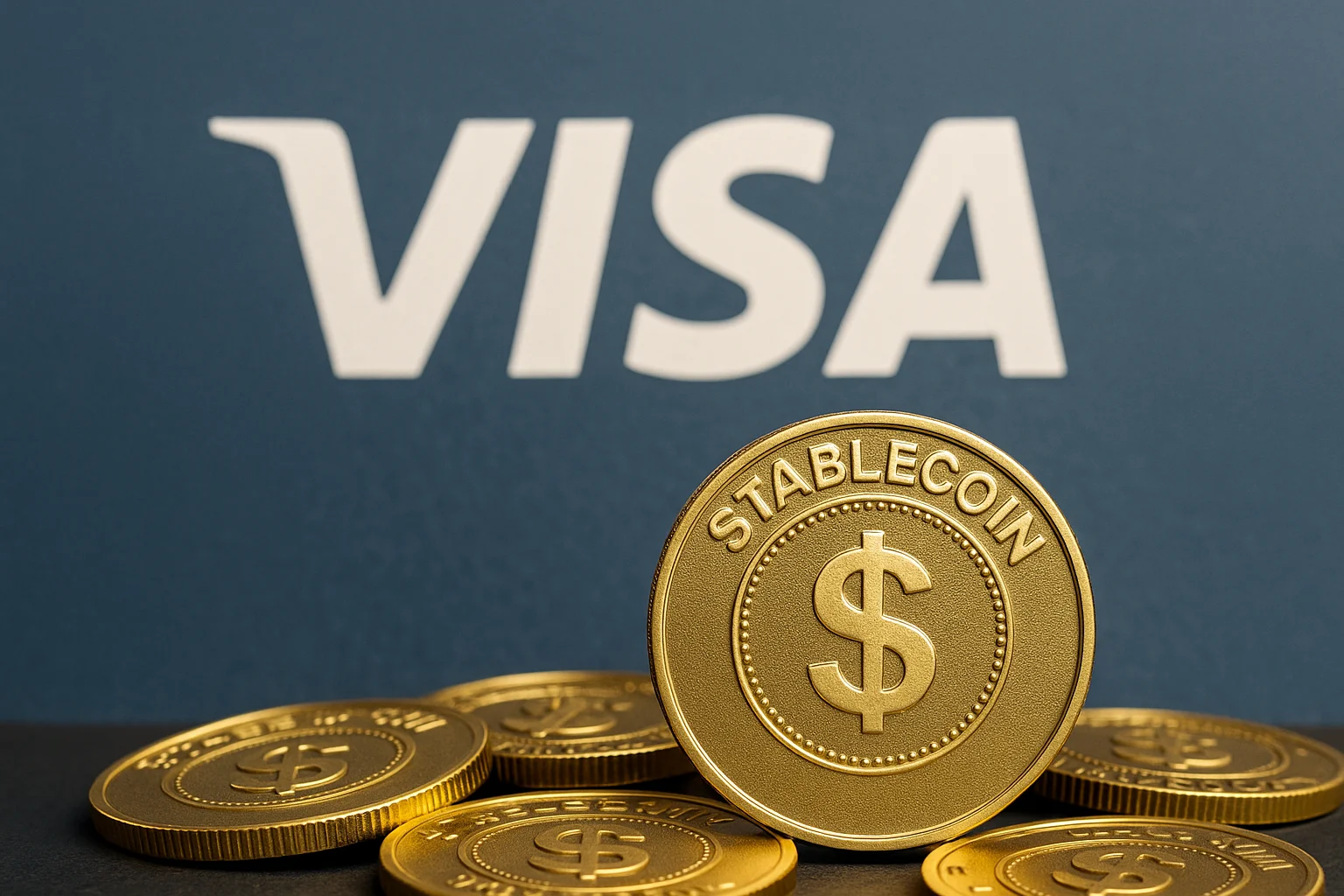
Barclays Warns of a Lackluster 2026 for the Crypto Market
In its year-end report, Barclays painted a cautious picture for the cryptocurrency markets in 2026. According to the bank, the coming year will be a period of declining trading volumes, weakening investor appetite, and a lack of clear catalysts to trigger a new upward trend. This outlook is particularly challenging for individual investor-focused platforms like Coinbase and Robinhood, which derive a significant portion of their revenue from spot market trading. The report emphasizes that crypto markets have historically been largely driven by strong narratives and noteworthy developments. Intense inflows into spot Bitcoin ETFs in March 2024, or political developments in the US highlighting crypto-friendly rhetoric, led to short-lived surges in trading volume. However, according to Barclays analysts, in the absence of such events, it seems difficult for the market to generate strong momentum on its own. The bank expects spot crypto trading volumes to trend downwards in fiscal year 2026 and sees no clear trigger to reverse this trend. This slowdown in spot markets translates directly into revenue pressure, especially for platforms like Coinbase and Robinhood. Analysts note that these companies, which benefited significantly from individual investor interest during the recent bull run, are now facing a calmer market environment. The decline in trading volumes is limiting fee revenue, while high operational costs are putting additional pressure on profitability. There are question marks regarding regulationIn Barclays' report, the regulatory aspect stands out as an area with long-term potential but short-term uncertainty. The CLARITY Act, currently under consideration in the US, aims to clarify the framework for whether digital assets are considered commodities or securities. This bill could make it clearer which assets fall under SEC oversight and which under CFTC oversight. According to the bank, such regulation could reduce the operational risks of crypto companies and pave the way for new products, particularly tokenized assets. However, given potential legal challenges and the implementation process, the passage of the bill through the Senate is not guaranteed to significantly boost the market by 2026. Coinbase holds a special place in Barclays' analysis. While the company is trying to expand into areas such as derivatives and tokenized stocks, according to the bank, weakness in spot trading volumes in the short term is overshadowing the impact of these initiatives. Therefore, Barclays lowered its target price for Coinbase stock to $291 and adopted a more conservative profit expectation.On the tokenization side, interest continues to grow. BlackRock, Robinhood, and some other major players are conducting pilot projects in this area. Despite this, Barclays believes that tokenization is still in its early stages and will be difficult to make a significant contribution to company balance sheets in 2026.Looking at the overall picture, Barclays defines 2026 as a "transition year" for the crypto markets. In this period, where individual investor activity is weak and short-term momentum is limited, sector players are focusing more on long-term strategies, regulatory compliance, and new product infrastructure. When and to what extent these investments will yield returns remains uncertain for now.
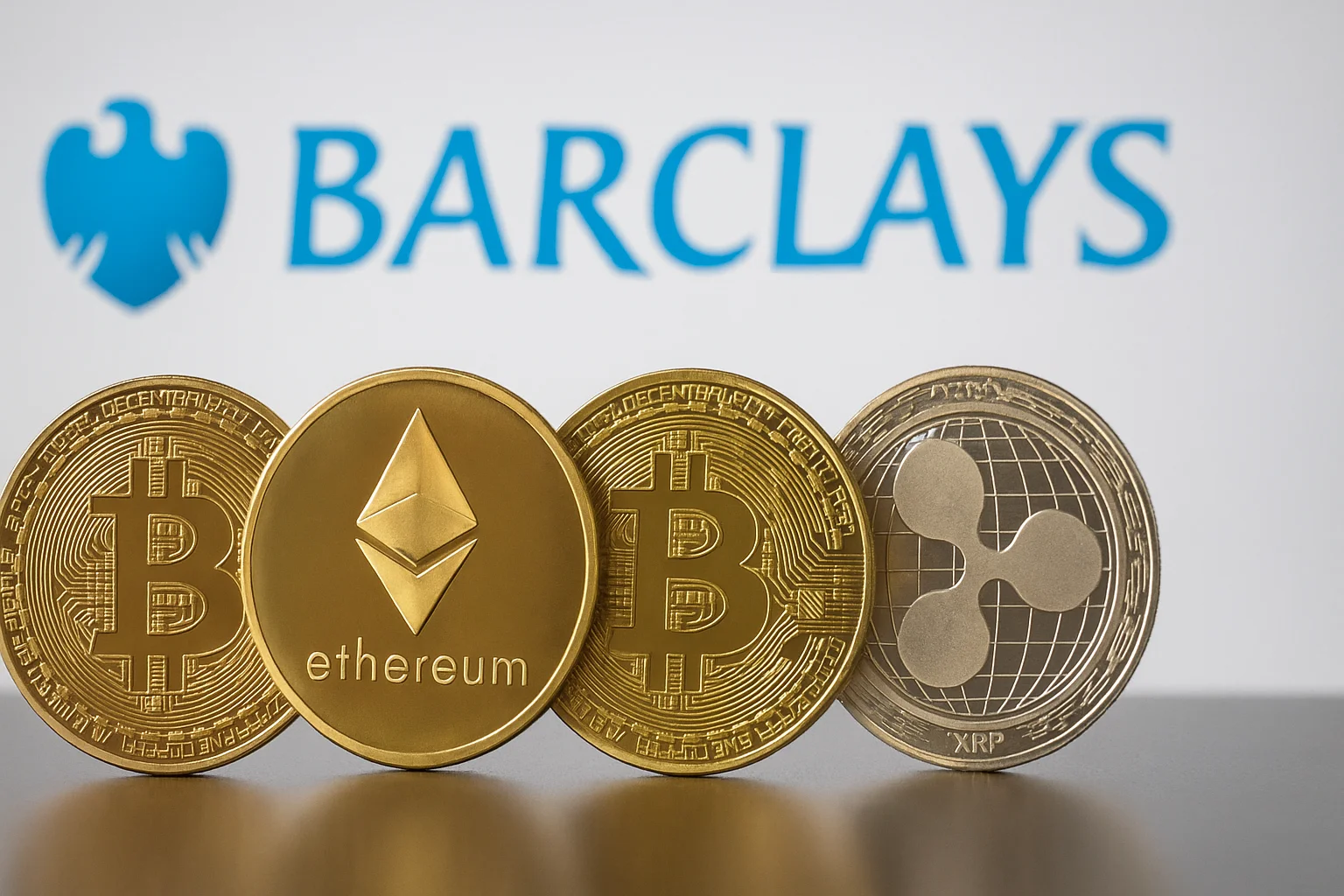
As the Year Draws to a Close, Bitcoin and Altcoins Have Slowed Down
The cryptocurrency market declined as it entered the last full trading week of the year, amid weakness in global risk appetite. Investors are adopting a cautious stance, particularly due to increasing questioning of high valuations in technology stocks, a loss of momentum in US equity markets, and conflicting signals from the US Federal Reserve (Fed). This cautious atmosphere has caused volatility in traditional markets to be reflected in crypto assets as well.Stagnation in Bitcoin and altcoinsAccording to market data, Bitcoin traded at around $89,600 on Monday morning, down approximately 0.5%, and struggled to hold just above last week's lows. Ethereum also saw limited losses, falling to around $3,120. Major altcoins such as XRP, Solana, and Dogecoin experienced losses of up to 2%. The overall picture revealed that risk appetite remains fragile and buying appetite is weak. This volatility occurred despite US stock index futures showing a limited recovery in the morning hours following last week's sell-off in technology stocks. While S&P 500 and Nasdaq 100 futures rose around 0.2%, investors remain doubtful about whether current valuations of technology companies can be sustained into 2026. Increased spending on AI investments and the question of how much this spending will be supported by profitability are putting pressure on risky assets. This cautious approach is also hindering recovery efforts in the cryptocurrency market following the sharp pullback in October. A significant drop in trading volumes has been observed in recent days, and low liquidity is making price movements more volatile. This is leading to a defensive tone in the market. Jeff Mei, the operations director of the BTSE crypto exchange, notes that investors are reluctant to invest in crypto assets. According to Mei, the decline in October, coupled with concerns that the US stock market is overvalued and the Fed's unclear messages, is causing investors to shy away from risk. However, Mei emphasizes that net inflows into Bitcoin ETFs continue and that the Fed's securities buybacks are providing liquidity to the system. He points out that this liquidity has the potential to flow into both stocks and cryptocurrencies over time.Mei also states that year-end position adjustments play a significant role in the current weakness. Investors taking profits and waiting until early 2026 to open new positions is increasing selling pressure in the market.Augustine Fan, head of research at SignalPlus, warns that low liquidity could further exacerbate downward movements in the coming weeks. Fan says that trading volumes have decreased significantly since a specific market event in October, and overall market sentiment has turned negative. In this environment, he notes that Bitcoin and Ethereum are being used as a kind of balancing factor by investors as they adjust their portfolio risks. Fan emphasizes that short-term price movements should not be exaggerated, stating that hourly or daily fluctuations can be misleading under current conditions. However, he adds that overall sentiment remains weak and that pressure on prices may continue until the end of the year.
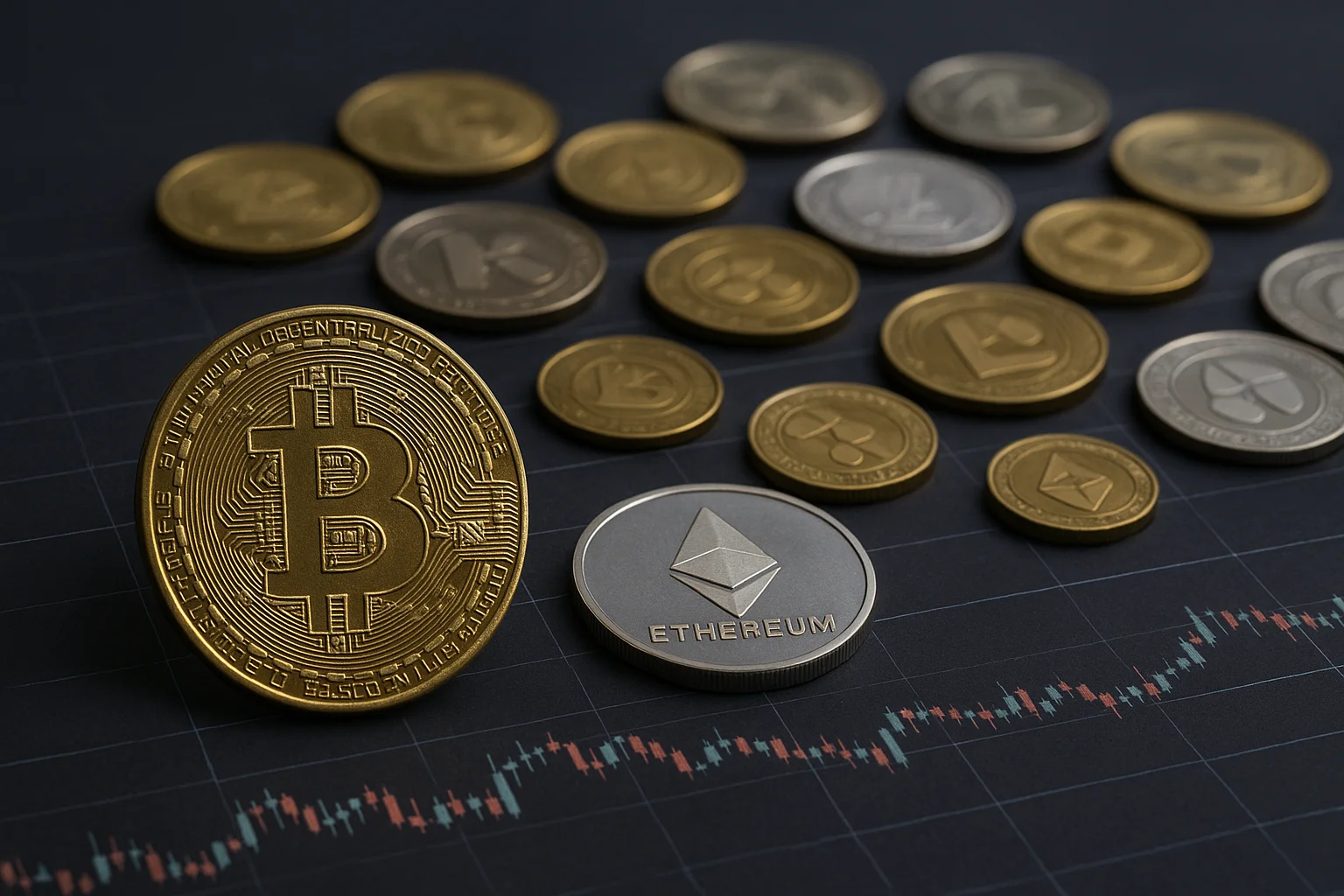
LINK Comment and Price Analysis - December 15, 2025
LINK Technical OutlookOn the LINK side, the price has been moving within a descending channel for a long time, and with the latest structure, this channel has also turned into a wedge-like descending formation. Especially the recent upward attempts weaken as the price approaches the upper band of the channel and face selling pressure. This shows that there is still no clear breakout and the structure remains under pressure.In the short term, the 13.1–13.3 band is an important balance zone. The price is currently trying to hold just above this region. If dips below this level increase, 12.5 and then the 12.0–11.6 region come back into play. Since this area has previously produced strong reactions, it serves as the main support on the downside.On the upside, eyes are clearly on the 13.9–14.2 band. This region corresponds to both the upper trend of the descending channel and the wedge. If LINK can break this area with volume, the structure breaks and the short-term downtrend begins to end. In such a scenario, first 14.8, and then 15.5–16.0 become more achievable price zones. Falling Channel Structure These analyses, which do not provide investment advice, focus on support and resistance levels that are thought to create short- and medium-term trading opportunities depending on market conditions. However, the responsibility of trading and risk management belongs entirely to the user. In addition, it is strongly recommended to use stop loss for the positions shared.

ZRO Comment and Price Analysis - December 15, 2025
ZRO Technical AnalysisThe project integrated Stargate Finance by acquiring it with ZRO this year, and through this, it is aimed to provide more revenue flow to LayerZero’s cross-chain bridge infrastructure. In addition, the foundation bought back approximately 50 million ZRO from early investors, taking steps to control the circulation in the market. Such moves can be perceived positively by investors in terms of price stability and ecosystem confidence. Falling Wedge Formation The ZRO chart structure fits a descending wedge formation quite cleanly, and the price is currently moving in the region where it is touching the upper band of the formation. In such structures, touches to the upper band generally bring forward two possibilities: either the formation does not work and a dip toward the lower band occurs again, or since the final phase of tightening is entered, preparation for an upside breakout is made.In the current view, the price has hit the upper trend line in the 1.46–1.50 band. As long as this region is not broken, it is normal for short-term selling pressure to continue. Below, the 1.42 and 1.33 levels stand out as intermediate supports. For the continuation of the formation, it is especially important for the price to hold above 1.33; if this area is lost, the wedge structure weakens and the price may relax back toward the 1.25–1.18 band.On the other hand, if the price manages to break above 1.50 with volume, the descending wedge formation technically starts to work upward. In this scenario, the first reaction region is 1.56, followed by the 1.66–1.70 range. The wider target region of the formation extends up to the 1.83 level.In summary, the picture is as follows:The price is in a decision zone because it has touched the upper band.If a breakout above 1.50 comes, the formation works upward and targets get triggered quickly.Below, the 1.42 → 1.33 supports must be preserved; if 1.33 is lost, the structure breaks down.These analyses, which do not provide investment advice, focus on support and resistance levels that are thought to create short- and medium-term trading opportunities depending on market conditions. However, the responsibility of trading and risk management belongs entirely to the user. In addition, it is strongly recommended to use stop loss for the positions shared.
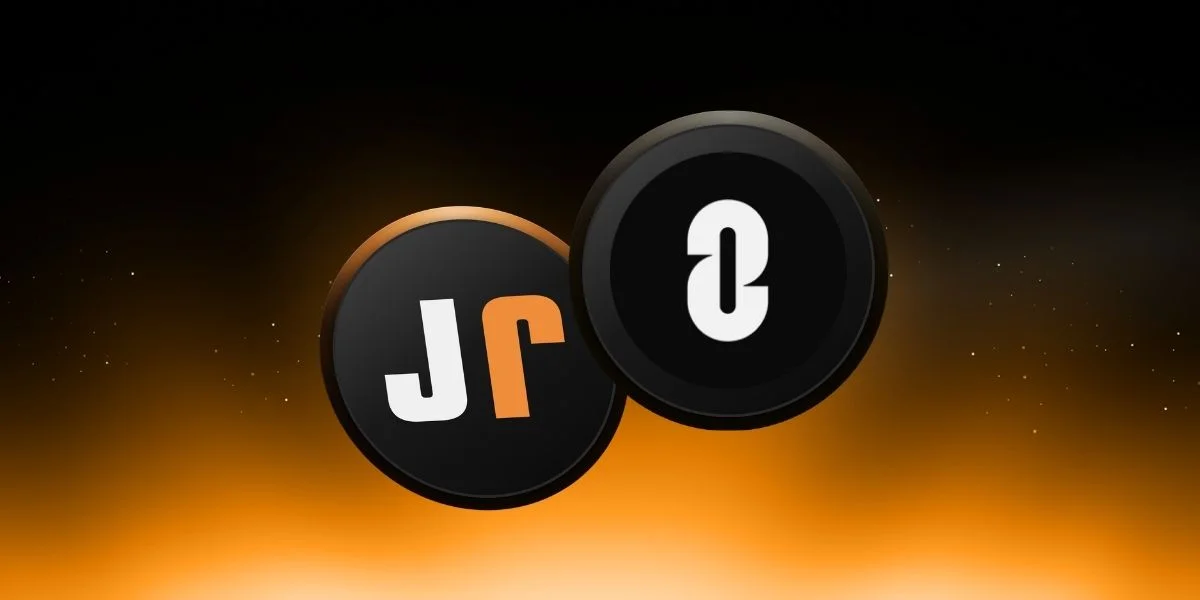
EDU Comment and Price Analysis - December 14, 2025
EDU/USDT Technical Analysis Trending Theme In the EDU chart, the overall structure is clearly progressing within an ascending channel, and the price is currently touching the lower band of the channel, which is the trend support. Since this region has worked several times before, it is an important technical decision point. The reactions coming from here will determine whether the ascending structure will continue or not.In the short term, the 0.135–0.14 band is in critical support position. As long as the price stays above this region, the current ascending channel is not considered broken. If holding continues here, first the 0.158–0.165 range, and then the 0.18–0.20 band — the mid-upper region of the channel — become targets again. Especially closes above 0.165 indicate that momentum has started to turn upward again.However, if this trend support is clearly lost, things change a bit. In such a scenario, the price exits the channel and a pullback risk toward the 0.127–0.122 region forms. Since this area is both a horizontal support and overlaps with previous lows, it acts as the last defensive line on the downside.These analyses, which do not provide investment advice, focus on support and resistance levels that are thought to create short- and medium-term trading opportunities depending on market conditions. However, the responsibility of trading and risk management belongs entirely to the user. In addition, it is strongly recommended to use stop loss for the positions shared.
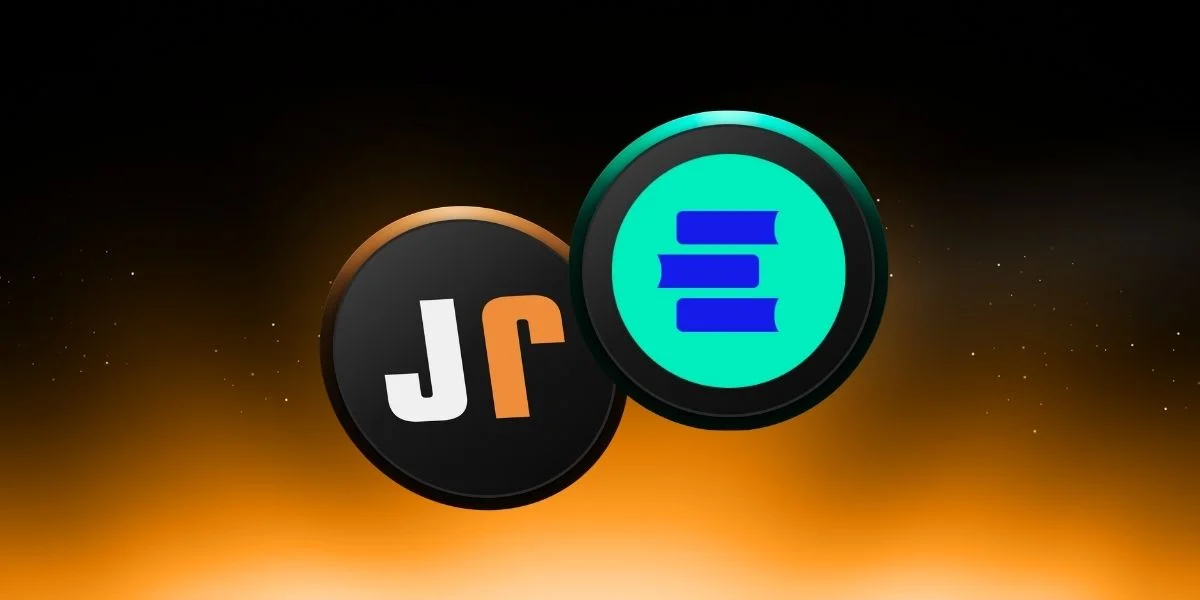
What is Monad (MON)?
The cryptocurrency world is growing with new solutions every day. However, fundamental issues such as scalability, speed, and cost still stand as major obstacles for many networks. Established blockchains like Ethereum struggle to achieve high transaction capacity without compromising decentralization. This is where next-generation Layer 1 projects come into play, and Monad (MON) is at the forefront of these projects. Monad aims to make a difference with its strong engineering background, high transaction capacity, and developer-friendly structure. Its full compatibility with Ethereum means that thousands of applications and tools built on it can be migrated to this new network without extra effort. With 10,000 transactions per second (TPS), 0.8-second transaction finality, near-zero transaction fees, and parallel transaction execution capability, Monad is redefining the definition of a "high-performance blockchain." With its developer-friendly approach, decentralized architecture, and impressive investment support, Monad is on the radar of both individual users and institutional actors by 2025. But how robust is the technology behind this rise? Why are investors turning to MON coin? Let's start with the most basic questions: What is Monad, what is MON coin, and what is it used for? Let's examine all the details in this guide.Definition and Origins of MonadMonad is a blockchain network designed for running smart contracts, fully compatible with the Ethereum Virtual Machine (EVM). Thanks to this compatibility, applications and tools developed in the Ethereum ecosystem can be directly migrated to the Monad network without requiring code changes. Contracts written in Solidity work the same way; popular tools such as Metamask, Foundry, and Hardhat are supported. This allows developers to migrate to the network without going through an extra learning process.The project was founded in 2022. Behind it is an experienced team of engineers who have designed high-frequency trading (HFT) systems within Jump Trading for many years. They wanted to bring their accumulated knowledge about financial infrastructures to the blockchain world. They closely observed that transaction limits, network congestion, and high gas fees on Ethereum were challenging DeFi projects. This situation created a need for an infrastructure with higher performance that wouldn't be overwhelmed by transaction volume. Monad was developed to address this need. Many projects in the blockchain space are trying to gain speed by compromising either security or decentralization. Monad chose a third way in this equation. It aims to achieve high performance through technical solutions such as transaction capacity, database optimization, and parallel execution. The goal is to offer a faster and lower-cost experience for both developers and users on a robust infrastructure. Ethereum compatibility simplifies the transition process, while Monad's technical strength lays the groundwork for a more scalable ecosystem. Monad's "parallel operations". Source: Monad MONAD's History: Key MilestonesMonad's journey began in 2022. In the same year, Monad Labs was officially established, and the project development process began. During this period, the focus was on idea development and building the core team. The technical vision was clarified; the goal was to build a high-performance, Ethereum-compatible Layer-1 network.The first major financial step was taken in February 2023. In a seed funding round led by Dragonfly Capital, Monad Labs secured $19 million in funding. This support significantly accelerated testnet preparations and the early development process. At this stage, the project team reached a larger engineering staff.In April 2024, a milestone occurred. A massive $225 million in funding was secured in a Series A funding round led by Paradigm. This round was not only one of the largest crypto investments of the year; it also revealed Monad's significant valuation and growth potential. Leading investors in the sector such as Electric Capital, Greenoaks, and Coinbase Ventures also participated in the round. The company's valuation was estimated at approximately $3 billion after this funding round.In the third quarter of 2024, the testnet was launched publicly. This phase was not only a technical testing phase but also a community-building initiative. A retroactive "airdrop" plan was announced for early users who participated in the testnet. A portion of the MON tokens was distributed to users who actively participated in this process. Thus, the project began building a loyal community even before the mainnet launched.And finally, on November 24, 2025, Monad mainnet went live. Immediately before the mainnet launch, a public sale (ICO) was held on Coinbase's token sale platform through a subsidiary of the Monad Foundation. Approximately 7.5 billion MON were sold at a fixed price of $0.025, raising a total of $187.5 million in funds. With the activation of the mainnet, more than 200 validator nodes began operating. This demonstrated that the goal of a high level of decentralization was achieved from day one. As of December 2025, the MON coin price is trading at around $0.02. Why is Monad Important?In the blockchain world, most networks try to strike a balance between security, decentralization, and scalability. However, there are very few examples that can offer all three fundamental features simultaneously. Monad focuses on this problem. The network's architecture is designed to increase transaction throughput while simultaneously maintaining security and a distributed structure. While most Layer-1 chains can only succeed in two of these, Monad claims to carry all three together.The limited transaction capacity, high fees, and slow confirmation times seen in large networks like Ethereum hinder truly scalable applications. Monad solves these problems by addressing the fundamentals of the system. Both the infrastructure code was written from scratch, and high-frequency system experience was directly reflected in this design.The most significant difference of Monad is its parallel transaction execution feature. In traditional EVM-based chains, transactions are processed one by one and sequentially. Monad, on the other hand, can execute these transactions simultaneously. This increases both transaction throughput and shortens block time. The average block time is approximately 0.4 seconds. The finalization time is reduced to as little as 0.8 seconds. Transactions are finalized instantly. The network uses a specially developed MonadBFT algorithm at its consensus layer. This structure is a Proof of Stake-based Byzantine Fault Tolerant (BFT) system. This means that validators running the network participate in block production and confirmation in exchange for the MON tokens they stake. This structure is both energy-efficient and resistant to attacks. MonadBFT şeması. Kaynak: Docs.Monad Monad is also strong in database and state management. It uses a proprietary data system called MonadDB. Thanks to this structure, the network can efficiently store hundreds of thousands of transactions and perform retrospective read/write operations without delay. This layer, which is one of the points where performance bottlenecks in traditional EVM chains, does not create a bottleneck in Monad because it has been redesigned from the ground up. Another prominent feature of the network is its minimum transaction costs. Thanks to high capacity and low latency, the network does not experience congestion. This ensures that transaction fees remain stable and low. This feature is of great importance in applications such as micro-payments, in-game transfers, and fast trading transactions. Monad stands out not only technically but also in terms of developer experience. Thanks to EVM compatibility, Ethereum developers can easily migrate their projects to this network. It can work directly with familiar tools such as Hardhat, Foundry, and Metamask. This both lowers the barrier to entry and allows the network's ecosystem to grow rapidly.Use CasesThe high speed and efficiency offered by the Monad network provide significant advantages in various use cases:High-frequency transactions: Monad's transaction capacity of approximately 10,000 TPS enables high-frequency transactions on-chain in large-scale trading platforms and decentralized exchanges. For example, on-chain exchange applications can handle volumes close to traditional markets such as Nasdaq or CME on Monad.Gaming and real-time applications: Low block time and almost zero transaction fees create a suitable environment for blockchain-based games and interactive applications. Since transactions on Monad achieve instant finality, real-time multiplayer games or applications requiring instant data can run smoothly on this network.DeFi and complex DApps: High throughput and low latency improve the user experience in decentralized finance (DeFi) protocols. Complex DApps requiring intensive transactions, such as lending, derivatives trading, or on-chain social networks, can become scalable thanks to Monad; users can use these services without experiencing lag or high fee issues. Migrating Ethereum applications: Applications developed for Ethereum or other EVM-based networks can be easily migrated without additional adaptation thanks to Monad's EVM compatibility. Developers can deploy existing Solidity smart contracts to the Monad network, benefiting from higher performance while continuing to use all the tools in the Ethereum ecosystem.Token EconomyThe MON token, the native cryptocurrency of the Monad network, plays a central role in both the operation of the network and the incentive mechanisms of the ecosystem:Total Supply: The total supply of MON tokens is fixed at 100 billion units. The distribution of this supply is planned to be broad-based in favor of the community through early airdrop programs (the project distributed tokens to users via an airdrop before the mainnet). Gas Fees: MON is used to pay gas fees for transactions on Monad. Thanks to the network's high transaction capacity, transactions can be processed with extremely low fees, which is a great advantage for micro-payments or applications requiring frequent transactions.Staking and Security: The Monad network uses the Proof of Stake (PoS) based MonadBFT consensus algorithm. Validators participate in block production and transaction confirmation by staking MON tokens, thus securing the network. This staking mechanism protects the network against attacks while also allowing token holders to earn rewards from the network's transaction fees.Governance and Incentives: The MON token can also be used to provide incentives to ecosystem participants who support the network's growth and to enable community governance in the future. MON is an important tool for aligning interests between developers, validators, and users. Indeed, the MON airdrop to active participants during the testnet period is an example of this incentive mechanism.Who Founded Monad?There is a strong engineering team behind the Monad project. The team consists of individuals with years of experience in finance and technology, specializing in high-performance systems. Keone Hon, CEO and co-founder of the project, spent approximately eight years developing high-frequency trading systems at Jump Trading. He then conducted blockchain research under the umbrella of Jump Crypto. With his software engineering expertise, he has built a strong bridge between traditional finance and decentralized technologies. James Hunsaker, CTO and co-founder, leads the technical architecture. Like Hon, he also has a background at Jump Trading, and they designed Monad's core infrastructure together. The third co-founder, Eunice Giarta, is a researcher from MIT Media Lab and also has experience in financial product management. Bringing together different disciplines such as finance, software, and research, the team founded Monad Labs in 2022. The project's starting point is clear: to demonstrate that high-speed systems used in traditional markets can be applied to blockchain. They leveraged the technical skills gained at Jump Trading to offer an alternative to existing networks that suffer from scalability problems. The technical development process is carried out by the engineering team called Category Labs. The Monad client was written from scratch in C++ and Rust. All the code is open source and available to the community via GitHub. Both the consensus algorithm (MonadBFT) and the execution engine are open to public review. This transparency not only builds trust but also opens the door to contributions from the community. The overall coordination of the network is handled by the Monad Foundation, which organizes the project's sustainable development and decentralized governance processes. Strong financial backing is also present, with leading investors such as Paradigm, Dragonfly Capital, Electric Capital, and Coinbase Ventures providing both financial and strategic support to grow the project.Frequently Asked Questions (FAQ)Below, you can find some frequently asked questions and answers about Monad (MON):Is the Monad network compatible with Ethereum?: Yes, the Monad network works in full compatibility with the EVM (Ethereum Virtual Machine). This means that smart contracts, wallets, and developer tools developed on Ethereum can be used directly on Monad without the need for extra adaptation. Tools such as Metamask, Foundry, and Hardhat are supported. Thanks to this compatibility, developers can easily migrate their existing projects to the Monad network.How fast and scalable is Monad?: Monad has the capacity to process approximately 10,000 transactions per second (TPS). The average block production time is around 0.4 seconds. The finality time of transactions on the network does not exceed 0.8 seconds. This represents a very significant increase compared to Ethereum's approximately 15 TPS performance. This speed makes a big difference, especially in areas such as DeFi, gaming, and on-chain trading. What is the main function of the MON token?: MON is the network's native cryptocurrency. It is used to pay transaction fees and for validators to participate in the network. Users who stake MON tokens can become validators, ensure the security of the network, and earn rewards in return. MON also plays an important role in governance processes and incentive programs. How can MON tokens be purchased?: MON tokens are listed on major cryptocurrency exchanges. They can be bought and sold on platforms such as Bybit, Gate.io, and Coinbase. They are generally traded against USDT or similar stablecoin pairs. The token may also become available on decentralized exchanges. How secure is the Monad network?: The network's security is provided by MonadBFT, a customized Byzantine Fault Tolerant algorithm. This algorithm operates on a Proof of Stake basis. Hundreds of independent validators operate on the network. Thanks to its distributed structure, it provides strong resistance to attacks. In addition, network congestion and technical vulnerabilities are minimized with special solutions such as parallel execution and MonadDB. What does Monad offer developers?: Developers can use all the tools they are used to on Ethereum on Monad as well. Smart contracts written in Solidity can be directly integrated. In addition, thanks to open-source client software, a flexible environment is provided for those who want to contribute to the codebase, fork, or develop their own solution.What types of projects can be developed with Monad?: DeFi applications, NFT platforms, games, on-chain data services, social applications, and much more can be run on Monad. The network's high transaction capacity and low cost offer an ideal infrastructure, especially for projects with high transaction volume.What happened to those who participated in the testnet?: A "retrodrop" program was implemented for users who actively participated in the testnet period in 2024. As part of this program, a certain portion of MON tokens were distributed to the community for free. In this way, users who provided early support were rewarded. Similar community incentives may be introduced again in the future.You can find the most up-to-date analyses, tools, and guides about MONAD (MON) and layer-1 chains in the JR Kripto Guide series.
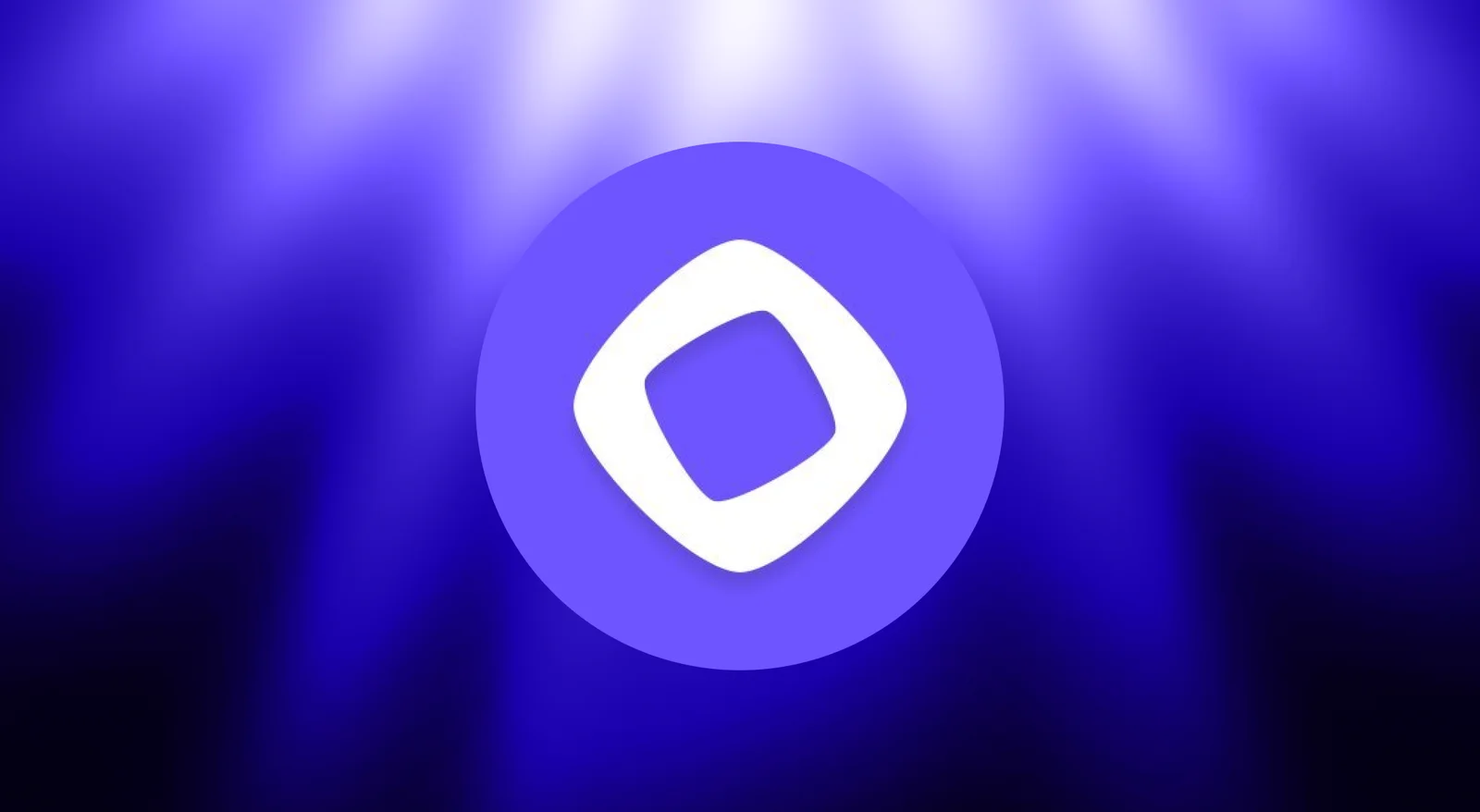
YouTube Offers Stablecoin Option to US Producers
YouTube has added a notable new payment option for US-based content creators. According to Fortune, the platform now allows eligible US content creators to receive their earnings in PayPal's dollar-pegged stablecoin, PYUSD. This move demonstrates both YouTube's increased focus on crypto-based solutions in its payment infrastructure and the acceleration of stablecoin integration into mainstream digital platforms.The new feature expands on the existing collaboration between YouTube and PayPal. PayPal had already begun offering stablecoin payments to certain user groups receiving bulk payments, particularly independent workers, starting in the third quarter of 2025. This new option for YouTube content creators is built on the same infrastructure. Currently limited to creators in the US, it remains unclear whether the application will expand to other markets in the future. What is PYUSD?Launched in 2023, PYUSD is a stablecoin pegged one-to-one to the US dollar. According to current data, PYUSD has a market capitalization of approximately $3.9 billion. Its trading volume in the last 24 hours is around $113 million. With these figures, PYUSD ranks as the eighth largest stablecoin globally. Its integration with a giant platform like YouTube, which has over 2.7 billion monthly active users, is considered a development that could significantly increase PYUSD's adoption rate. According to data previously shared by YouTube, the platform has paid content creators over $100 billion in total over the past four years. Even a small portion of this massive payment volume being directed towards stablecoins represents a significant turning point for the digital asset ecosystem. While there has been no official statement from Google or PayPal regarding this matter, industry representatives interpret this integration as a sign that the boundaries between traditional payment systems and crypto infrastructures are increasingly blurring. Beyond YouTube, PayPal continues to expand the use of PYUSD. The stablecoin can be held via the Venmo digital wallet. In a statement made in July, PayPal announced that users could pay small businesses with dozens of different cryptocurrencies, and that these payments were converted to PYUSD at the time of payment. This structure aims to make the crypto payment experience accessible to a wider user base by streamlining the technical details. From a broader perspective, the stablecoin market is undergoing rapid growth globally. US President Donald Trump's strong support for stablecoins and the subsequent enactment of the GENIUS Act played a significant role in clarifying regulations in this area. This regulatory momentum in the US has also led countries such as the United Kingdom, South Korea, and Japan to develop new rules for stablecoins pegged to their local currencies. According to market data, the total value of the global stablecoin market is approximately $300 billion. US Treasury Secretary Scott Bessent predicts that this market could reach $3 trillion by 2030.
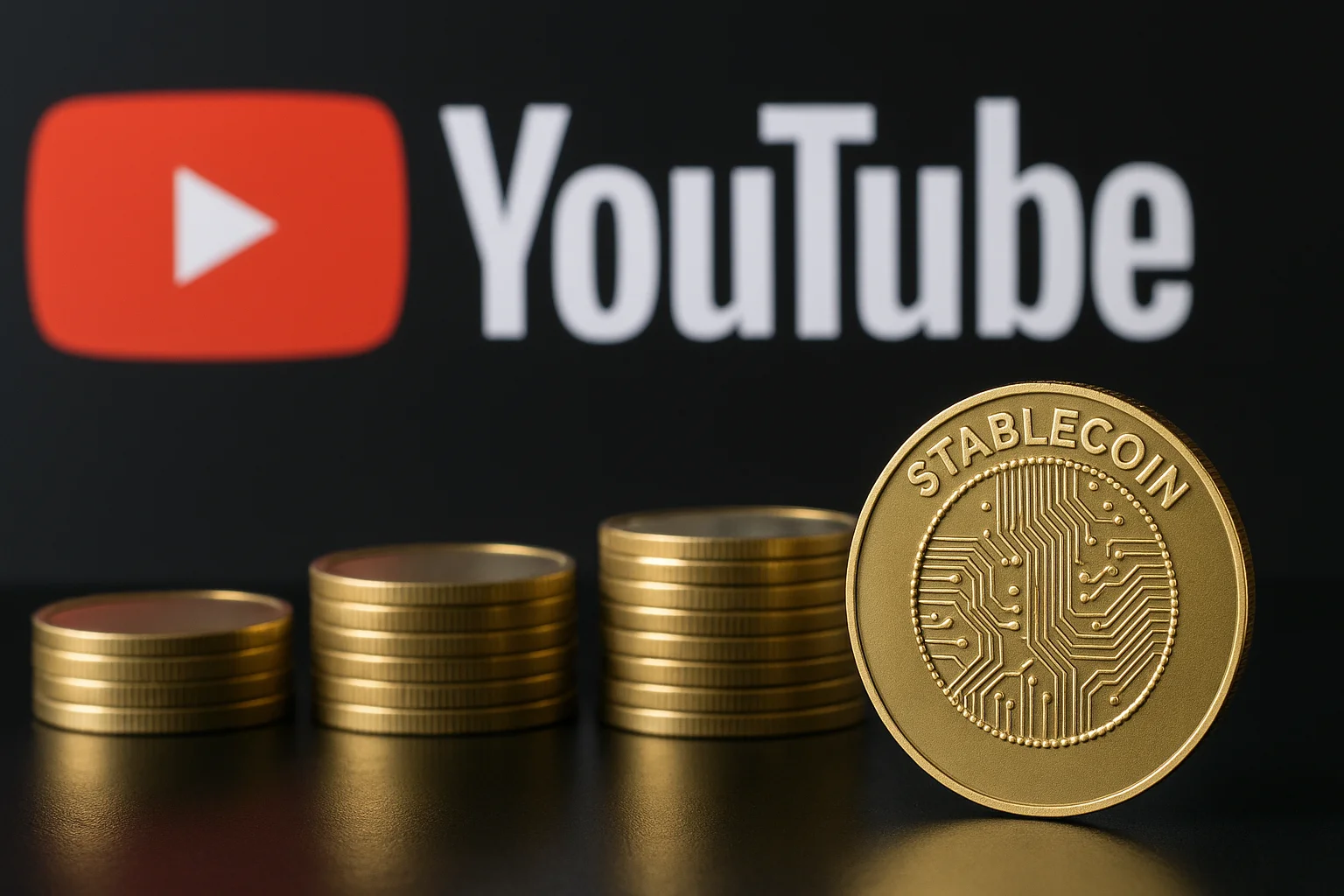
Do Kwon, the Man Behind The Collapse of Terra Luna, Was Sentenced to 15 Years in Prison
Do Kwon, the founder of Terraform Labs, has been sentenced to 15 years in prison in the US for his role in the 2022 Terra ecosystem collapse, which caused approximately $40 billion in losses in the crypto market. The verdict was announced on Thursday in the Federal Court for the Southern District of New York, exceeding the 12-year sentence requested by prosecutors.Do Kwon's sentence determinedUS District Judge Paul A. Engelmayer emphasized during the hearing that Do Kwon knowingly misrepresented investors. According to reports from the courtroom, Engelmayer stated that Kwon "chose to lie" and that the consequences of this choice were severe. The prosecution had requested a long prison sentence, citing both the scale of the fraud and Kwon's past conduct. Kwon's lawyers argued that the sentence should be limited to a maximum of five years.Do Kwon, in March 2023; He faced numerous charges, including electronic fraud, securities fraud, commodity fraud, market manipulation, and conspiracy to launder money. In August, however, he reached a plea agreement with the prosecution, admitting to only two charges: electronic fraud and conspiracy to commit fraud. Without this agreement, Kwon could have theoretically faced up to 135 years in prison if convicted on a total of nine charges. After the agreement, the upper limit was set at 25 years. The process leading to the case began with the collapse of the algorithmic stablecoin TerraUSD (UST). UST aimed to maintain price stability through algorithms and market incentives, working in conjunction with Terra's native token, LUNA. However, the mechanism proved unsustainable, and in 2022, UST lost its dollar peg, leading to a rapid devaluation of LUNA. This collapse triggered a chain reaction crisis that resulted in the bankruptcy of many cryptocurrency companies. The prosecution argued that Kwon made misleading statements to investors about the risks of the system during this process. Kwon's legal battle was not limited to the US. Arrested in Montenegro in March 2024 with forged travel documents, Kwon faced arrest warrants from both the US and South Korea. Following extradition discussions between the two countries, Kwon was extradited to the US in December 2024. According to the court ruling, Kwon can apply for transfer to South Korea after serving at least half of his sentence in the US. The approximately 17 months he spent in detention in Montenegro will be deducted from his sentence. Meanwhile, Terraform Labs also faced significant financial sanctions. The company had previously reached a $4.55 billion settlement with the US Securities and Exchange Commission (SEC), additionally accepting an $80 million civil fine. Market reaction to the decision was swift. Terra LUNA and Terra Classic (LUNC) tokens lost more than 10% of their value, while TerraClassicUSD (USTC) experienced a drop of more than 20%.

UNI Comment and Price Analysis - 11 December 2025
UNI/USDT Technical OutlookThe project team has put forward the long-discussed new governance and fee model proposal called “UNIfication.” This proposal aims to direct a portion of transaction fees toward UNI burn, reducing token supply and thereby capturing value. After this news, strong reactions were seen in the UNI price and trading volume increased, indicating that investors still care about the future of Uniswap. Narrowing Triangle Structure UNI’s long-term chart points to a very clear structure: There is a strong ascending main trend coming from below, and this trend has acted as the main backbone supporting the price for years. On the upper side, a shorter-term descending trend continues to put pressure on the price. The intersection of these two structures has formed a distinct symmetrical triangle formation on the chart.The price is currently trying to hold in the 5.30–5.50 region, which is the lower band of the triangle. Since this is both a horizontal support and the area where the long-term ascending trend line passes through, it is critical. As long as this region is preserved, a medium-term upward attempt from UNI is highly likely. As the first target, 6.18 and then the 7.43–7.88 band come forward.The descending trend above has strengthened with three separate touches. This trend pressure will continue until the price breaks upward. The upper boundary of the triangle corresponds regionally to the 9.30–9.70 range, and this is the main breakout area for UNI in the big picture. If this region is surpassed, the long-term uptrend can gain broad momentum.These analyses, which do not provide investment advice, focus on support and resistance levels that are thought to create short- and medium-term trading opportunities depending on market conditions. However, the responsibility for trading and risk management belongs entirely to the user. In addition, it is strongly recommended to use stop loss for the positions shared.
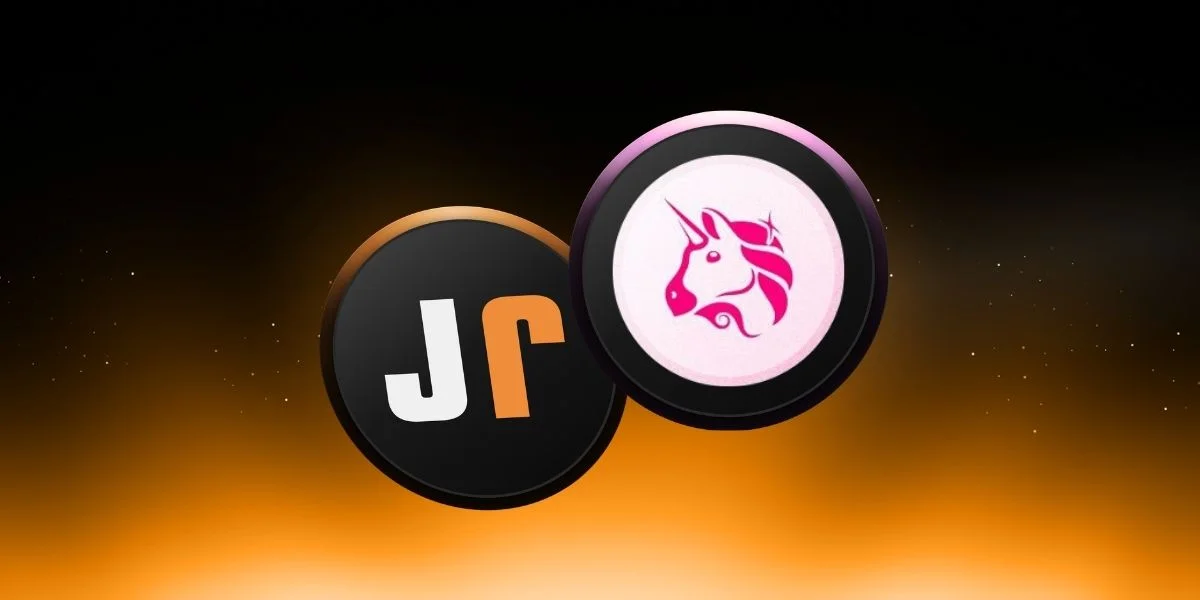
Bhutan Introduces Gold-Backed Solana Token
Bhutan has officially announced TER, a new gold-backed digital asset, expanding the scope of its national blockchain strategy. Developed by Gelephu Mindfulness City, an innovative development project in the country, and operating on the Solana network, TER will be held by DK Bank, Bhutan's first licensed digital bank. This structure guarantees that the token is fully backed by audited physical gold reserves on a 1:1 basis.Bhutan opts for gold tokenizationIn introducing TER, the Bhutanese government emphasized that the main goal of the project is to combine traditional store of value, especially gold, with modern blockchain infrastructure. This approach is a key part of the country's digital transformation vision, which has gained momentum in recent years. Pursuing a broad technology strategy ranging from Bitcoin mining to digital identity projects, Bhutan is taking another step to embody this vision with TER. The token's operation on the Solana network is no coincidence. Solana offers low transaction fees, transactions verified in seconds, and high scalability. Bhutanese authorities state that transparency and speed are critical, especially for international investors, which is why Solana was chosen. Through this structure, TER digitizes the traditional procedures of gold purchasing; investors both own real gold assets and can transfer them globally in seconds. Gelephu Mindfulness City, which launched TER, is established as a special zone within the country's "mindfulness-based development model." The zone aims to attract global capital, strengthen the digital economy, and serve Bhutan's long-term sustainable growth goals. Authorities state that initially, TER will connect with investors through DK Bank, and its use cases will be expanded as demand increases. Bhutan's move is not unique. Recently, Kyrgyzstan also announced its gold-backed digital token, USDKG, pegged to the US dollar. The initial issuance of USDKG was $50 million, making it one of the first state-sponsored tokenization examples in Central Asia. Bhutan's TER and Kyrgyzstan's USDKG demonstrate how smaller countries are attempting to diversify their financial systems by transferring their traditional asset reserves to digital infrastructure. Experts say this trend is accelerating. Gold tokenization is increasingly seen as an attractive option, both for portfolio diversification and for making real assets latchable on-chain. Bhutan's TER stands out as a state-backed example of this new model; moreover, its reliance on fully audited gold reserves lends credibility to the project.Bhutan's years of quiet but steady digitalization efforts (Bitcoin mining with hydroelectric power, national digital identity projects, Binance Pay integration, and support for local fintech initiatives) strengthen the infrastructure of TER. Therefore, the country positions the idea of digital gold not only as an economic but also as a technological move.With the launch of TER on December 17th, Bhutan will open a new chapter in the production of digital assets based on its national reserves. This new digital asset race, which began among smaller countries, may gain momentum in the coming period as more governments transfer their gold and similar tangible reserves to the blockchain.

Fed Decision Triggers Volatility in Crypto Market: Bitcoin and Altcoins Shaken
The crypto market entered a period of uncertainty following the Federal Reserve's announcement of a quarter-point interest rate cut. Initially welcomed, the decision was quickly digested due to internal committee disagreements and the lack of clear indications of further easing; risk appetite weakened, and prices turned down again. Futures data, however, shows that traders have already shifted to new expectations, pricing in a near 40% probability of a cut by March. This situation has carried the market into the final weeks of the year on an uncertain footing. At the FOMC meeting, the federal funds range was lowered to 3.5-3.75. The vote passed 9-3; two regional presidents opposed the cut, while Fed Governor Stephen Miran advocated for a more aggressive half-point reduction. The emphasis on "carefully evaluating incoming data" was closely watched, as it is language used in the past during periods of slowing interest rate cut cycles. This tone dampened hopes for further easing. Bitcoin experienced sharp fluctuations between $93,200 and $91,700 after the decision; Ethereum also exhibited similar volatility in the $3,340-$3,440 range. Solana, XRP, and BNB were also caught in the same fluctuations. The Fed's $40 billion Treasury bond purchases, starting on December 12th, have brought the "quantitative easing" debate back to the forefront. A similar program in 2019 was implemented for reserve management purposes; today, it is being discussed that its effect may be limited but potentially directional. What do the experts say?Analyst comments reflect the confusion in the market. According to the CryptoQuant team, BTC has the potential to break through the $99,000 and $102,000 resistance levels and head towards $112,000 if the Fed becomes more clearly "dovish." However, this requires not only further rate cuts but also a more consistent guide from the Fed regarding its inflation path until 2026. Nic Puckrin of Coin Bureau stated that the decision being less hawkish than expected gave the market a brief respite, but the fact that only one rate cut was predicted dampened this relief. Another view came from David Hernandez of 21Shares; according to Hernandez, the rate cut itself is the first sign that could increase risk appetite. "Today's rate cut is a lifeline thrown to sinking Bitcoin," he says, recalling the historical tendency of cheaper liquidity to flow into crypto. However, the price action in the market did not immediately confirm Hernandez's optimism. Bitcoin retreated to the $90,000 threshold the morning after the decision. After a brief jump above $94,500 on Tuesday, BTC returned to the middle band after failing to break this resistance. Over $514 million in leveraged positions were liquidated in the last 24 hours; losses from long positions were approximately three times greater than those from short positions.
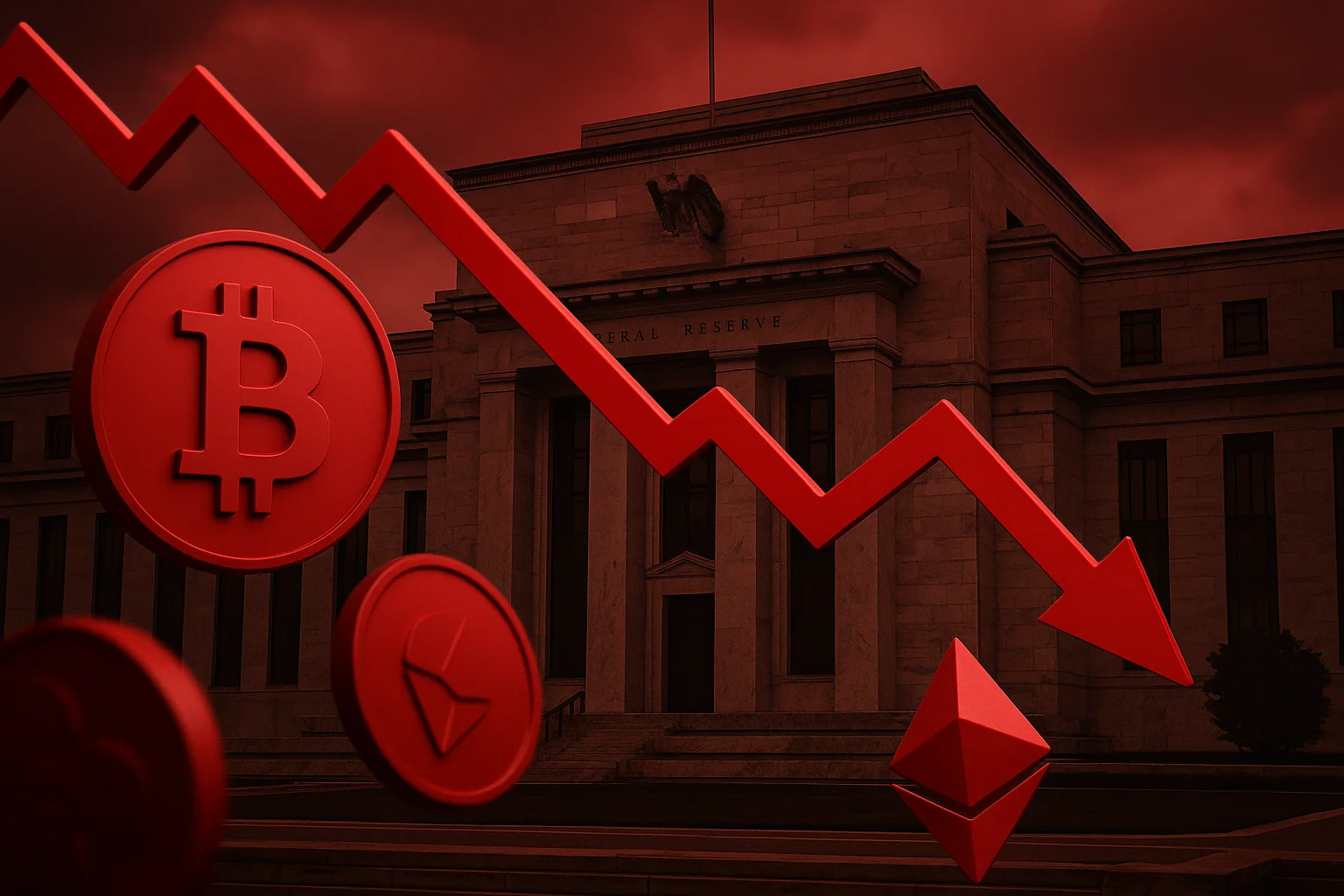
TON Comment and Price Analysis - December 10, 2025
TON/USDT Technical Analysis TON Current Status TON maintains its short-term recovery tendency, and the structure on the chart shows that the price is climbing step by step toward the upper resistances. With the latest movement, we see a TON trying to maintain permanence above the 1.67–1.70 band. Since this region is an intermediate resistance, its breakout would strengthen the upward momentum.In the short term, the technical target for the price is the 1.86 region. Because it is both a horizontal resistance and an intersection area of the Fibonacci projection, the price is expected to make its first significant test here. If 1.86 is surpassed, it creates a zone where the move can extend toward the 1.89–1.99 band.On the downside, the 1.61 support continues to work. As long as TON stays above this region, the trend remains positive and the pullbacks are interpreted only as interim corrections.In summary, the short-term picture is clear: for TON holding above 1.67–1.70, 1.86 is the first main target. The path up to this region is technically clean, and with increasing volume, a test of this level can be expected.These analyses, which do not provide investment advice, focus on support and resistance levels that are thought to create short- and medium-term trading opportunities depending on market conditions. However, the responsibility of trading and risk management belongs entirely to the user. In addition, it is strongly recommended to use stop loss for the positions shared.
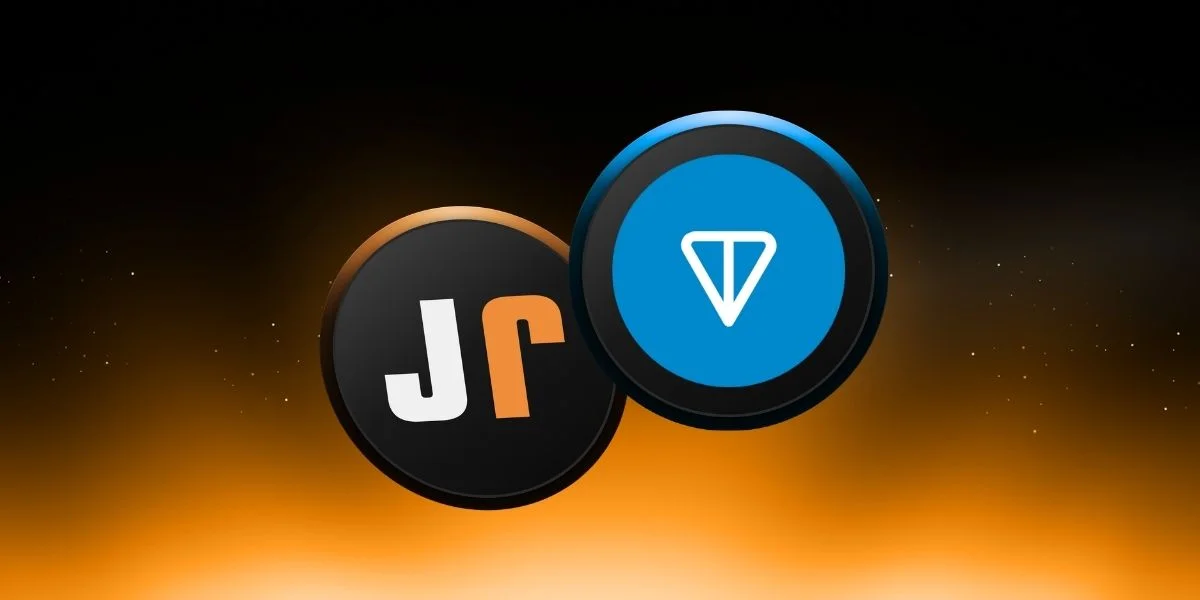
What is Pitbull (PIT)?
Pitbull (PIT) is a completely community-driven meme coin that lives on Binance Smart Chain. It's a digital asset that grows through voluntary contributions, independent of any central authority or founding team. When it launched on March 17, 2021, a total of 100 quadrillion tokens were minted; half of this massive amount was permanently removed from circulation by being sent to a "black hole" incineration address at launch. The project's guiding slogan is "All for One, One for All"; meaning everyone for each other, one for all. This perspective summarizes the nature of the Pitbull community. A portion of the fee earned from each transaction is directly passed on to existing token holders. The contract is non-modifiable, and liquidity is locked, creating a sense of security. In short, Pitbull exists as a decentralized community initiative that provides passive income. Let's take a closer look at Pitbull's origin story and what it aims to achieve. Pitbull's Definition and OriginsPitbull (PIT) is a token that automatically distributes rewards through a smart contract and operates using a "reflection" mechanism. Token holders automatically receive a share of transaction fees simply by holding PIT in their wallets; no extra staking, farming, or platform connection is needed. This feature offers an accessible and passive income-generating structure for many users. The project's striking aspect is that it has no central control point from the beginning. The development team relinquishes ownership of the contract immediately after launch; meaning no one has control over the contract anymore. This step is a significant turning point that makes Pitbull a true "community token." Similarly, there are no distributions such as project wallets or developer shares. From day one, all decisions are made by volunteers and users who contribute to the project.Participants contribute voluntarily in many areas, from graphic design to web development, translations to social media campaigns. Many elements, from the platform's logo to its official website, are shaped by these contributions. Users are not only investors but also the true owners of the project. Pitbull's founding purpose is quite clear: to provide a transparent, decentralized, and entirely community-managed crypto experience. It also places special emphasis on animal rights. A portion of each transaction is used to support animal shelters and non-profit animal protection organizations. In this respect, Pitbull is not just a cryptocurrency; it also presents itself as a movement aiming to create social benefit.Pitbull's History: Key MilestonesSince its launch, Pitbull has experienced remarkable developments in both technical and social areas. Token supply, burning strategies, exchange listings, and the evolving ecosystem have shaped the project's current identity. Here are some highlights from Pitbull's short but intense history:The first step was taken on March 17, 2021. When Pitbull launched on Binance Smart Chain, a total of 100 quadrillion tokens were produced. Exactly half of this amount (50 quadrillion) was sent to the "burn" address in the first minute, completely destroyed. This action not only fixed the maximum supply; It also sent a strong message that supply would be reduced in a transparent and irreversible manner. Around the same time, ownership of the project contract was relinquished, making the contract irreversible.Shortly after its launch, the Pitbull token began trading on various decentralized exchanges, most notably PancakeSwap. Subsequently, centralized exchanges such as CoinTiger, ZT, IndoEx, and BKEX also listed PIT. According to CoinMarketCap data, the token is currently traded on over 60 exchanges. This widespread access made it easier for investors to reach the project and significantly increased liquidity. The project also attracted attention with its community structure. Within the first year after its launch, Pitbull reached over 500,000 wallets. As of 2023, this number exceeded 528,000. Social media activities, community-organized competitions, and volunteer efforts contributed to the growth not only of the token but also of the consensus behind it.Pitbull's deflationary model became one of the fundamental building blocks of the token economy. Except for the initial burn, a 2% tax automatically collected from each transaction is sent directly to a "dead" address. This leads to a decrease in the token supply over time. The deflationary strategy aims for long-term value appreciation for token holders. Thanks to the decreasing supply, the value of circulating tokens theoretically has the potential to increase. Technically, the project is also progressing. The official roadmap includes numerous sub-projects such as PitDAO (governance), PitArcade (gamification), PitNFT (digital collectibles), PitMedia (content creation), PitPay (payment solutions), and PitBurn (automatic burning mechanism). While these projects are still under development, each one is a sign that Pitbull will evolve from just a meme coin into a multifaceted ecosystem. Specifically with PitBurn, the goal is to eventually eliminate 70% of the circulating tokens.As of December 2025, the PIT coin price is trading at around $0.0000000002523. Why is Pitbull Important?Pitbull offers an experience that centers the community directly, not institutional investors. Ownership is delegated, liquidity is locked, and decisions are made through voluntary participation. In this way, it stands out as a rare example of "complete decentralization" in the crypto world. While offering a passive income model with its technical infrastructure, it does not neglect the social responsibility side. When financial tools, gamification, and aid projects are combined, what emerges is not just a token, but a comprehensive community movement.Below, we examine the use cases and token economy separately to better understand why Pitbull is important:Use CasesOne of Pitbull's strongest aspects is its community-centric applications and tools. Although most of these are still in active development, they have already taken shape with significant community contributions. DeFi InfrastructuresThe community has developed different projects to create decentralized finance tools. For example, PitSwap stands out as a DEX belonging to the Pitbull ecosystem. Users can exchange tokens on this platform. Another project called PitSafe focuses on asset security. Additionally, tools like PitCharts and PitTracker allow users to easily track the token's price movements, liquidity status, and trading volumes. Furthermore, content-focused projects like PitMag (community magazine) and PitMusic handle the entertainment and information aspects.Gamification and NFTsSome of the projects included in Pitbull's roadmap focus on NFTs and gamification. For example, PitFarm is planned as an NFT-based farming game. PitArcade aims to offer multiplayer mini-games. PitNFT will serve as a marketplace for trading collectibles. These projects target users who want to have an interactive and fun experience, not just hold tokens. For young communities in particular, such applications could be one of the factors accelerating the project's adoption. Charity and Social ProjectsOne of Pitbull's most distinctive aspects is its close relationship with social responsibility. The project donates a portion of the taxes on each transaction to non-profit animal protection organizations. So far, it is known that organizations such as Kennel to Couch, Rolda, and Bullies in Need have been supported. In other words, every time a user transfers PIT, the system automatically directs a portion to charity. This makes the investment a form of donation. Projects that provide such direct social benefit are quite rare in the crypto ecosystem.Token EconomyAlthough Pitbull's token structure seems simple at first glance, it contains several cleverly designed mechanisms. Supply limitation, automatic burning, and a passive income model offer incentives for long-term holders and play important roles in price stability. Supply and Burning MechanismThe total supply of Pitbull was set at 100 quadrillion. At launch, half of this supply—50 quadrillion tokens—was irreversibly burned by being sent to a "black hole" address. This initial move significantly reduced the supply from day one. The burning process didn't end there; the system automatically burns 2% of each transaction. This aims to create a supply shortage by gradually reducing the amount of tokens in circulation. This strategy helps maintain the price floor while providing a stronger position for users who are holding (hodl). Smart Contract and SecurityPitbull's security approach works on a "write code and leave it" basis. After launch, the developer relinquishes ownership of the contract. This means the smart contract can no longer be modified externally. In addition, the liquidity pool is permanently locked; meaning no one can withdraw these funds. All these measures make fraud scenarios like rug pulls (project founders fleeing) largely impossible. With this approach, called Safe by Design, Pitbull provides investors with confidence not only technically but also psychologically. Transfer Tax and Distribution ModelA flat tax of 4% is applied to PIT token purchase or sale transactions. Half of this percentage (2%) is automatically distributed to token holders. This means that as long as you hold PIT in your wallet, you continuously receive a share from transactions. The remaining 2% goes directly to the burning address. Thus, each transaction generates passive income while simultaneously reducing the token supply. This model eliminates the need for staking, farming, or third-party applications; earnings are directly credited to your wallet. This user-friendly system provides significant convenience, especially for investors without technical knowledge. Pitbull's website's explanation of the token economy. Who Founded Pitbull?Behind Pitbull is a volunteer team that doesn't reveal its face but contributes continuously. The project's developer completely relinquishes ownership of the contract shortly after the token is launched. This means that no one has the authority to unilaterally interfere with the contract. "Renounced ownership" forms the technical basis for true decentralization, one of Pitbull's core principles. The project doesn't have a known, fixed founding team. Instead, volunteers from within the community support the project. According to official sources, names like Jack, Jari, Faab, Max, Mer, and Cameron play active roles within the community. Some contribute to software development, while others handle social media management, organization, or design. However, these individuals are not part of a hierarchy. Everyone has a say in proportion to their contribution.Decisions don't come from a central structure, but from the collective wisdom of the community. Every important step is based on community discussions and feedback. In the future, a DAO (Decentralized Autonomous Organization) structure called PitDAO is planned to further institutionalize this process. With this system, voting, governance proposals, and question-and-answer sessions will be conducted more regularly. Thus, investors will not only hold tokens but also become actors who guide the project. In short, Pitbull's leadership approach is not a classic "team" model. Here, everyone's contribution is valuable, and everyone's voice is heard. The project stands out as an example of solidarity built with code, design, ideas, and volunteerism. Frequently Asked Questions (FAQ)As we come to the end of the article, let's summarize some of the most frequently asked questions about Pitbull (PIT) in the community. This section may be especially useful for those who are researching for the first time or who want to clarify some technical points before making an investment decision. Now let's take a look at those basic questions together.Is PIT reliable? The Pitbull token has a security-focused design. At the beginning of the project, contract ownership was transferred from the central developer to the community (ownership renounced), and the liquidity pool was locked indefinitely. This prevents any individual from changing the contract or withdrawing liquidity funds. Therefore, from a distance, it has a structure with reduced risks. However, like all cryptocurrencies, PIT is subject to high volatility and market risk. Therefore, it is important to research the project details and assess your risk tolerance before investing. Where to buy PIT? Since Pitbull (PIT) is a BEP-20 token, it can be traded on all Binance Smart Chain compatible DEXs (e.g., PancakeSwap). It is also listed on several centralized exchanges. According to CoinMarketCap data, the most active trading volume is seen on PancakeSwap (V2), while it is also traded on exchanges such as CoinTiger, ZT, IndoEx, and BKEX. Additionally, PIT is listed on major exchanges such as Gate.io, KuCoin, and MEXC. When making purchases, make sure the platform you use is secure and that you are using the correct token contract address. (You can check the BscScan page for the official address; for example, the address 0xa57ac35c…2c2e50 on BscScan belongs to the Pitbull token.)What about wallet compatibility? The Pitbull (PIT) token runs on BNBChain (formerly BSC), so it can be stored in any BNBChain-compatible wallet such as Trust Wallet, MetaMask, and Binance Web3 Wallet. According to Binance's guidelines, Pitbull tokens can be easily traded using Binance Web3 Wallet. Make sure the wallet you are using supports the BNBChain network. For example, you can add the BSC network to your MetaMask wallet and view your token balance by uploading the PIT contract. What is the tax rate and distribution based on? A fixed 4% transaction fee (tax) is deducted from Pitbull transactions. 2% of this amount is reflected in all PIT-holding wallets (as a holder reflection reward) and 2% is sent to the burning address, reducing the circulating supply. So, a total of 4% is deducted from each buy/sell transaction: half goes to rewards for community members, and the other half is spent on token burning. This allows existing holders to earn passive income and supports a decrease in supply instead of an increase. The tax mechanism is automatically executed via smart contract; investors do not need to perform any manual actions. What is the long-term investment potential? Pitbull is a meme coin with a high total supply, so it's not easy for it to reach large price targets. According to CoinMarketCap analysis, values like $0.01, for example, don't seem very likely due to the current supply size; however, planned updates in the roadmap and strong community support could allow the price to increase in the long term. Of course, as with any crypto investment, there are risks. If community projects are successfully implemented and adoption increases, Pitbull's value could also rise over time. There are potential rewards as well as community incentives for active members who contribute to the community. However, it should be remembered that caution is always necessary when investing in any asset in the crypto markets. Discover the latest analyses, tools, and developments regarding the PIT token and the community-driven meme coin ecosystem in the JR Kripto Guide series.

Binance Expands Futures: New Announcement for Three Altcoins
Binance Futures announced two new futures contracts on December 10, 2025, along with an update to its multi-asset mode. The platform expanded its token diversity and increased margin options, strengthening the flexibility of professional traders in the leveraged trading space. WET Futures Contract Coming SoonThe first announcement of the day came for WET, the native asset of Humidifi, described as the largest DEX in the Solana ecosystem. The WETUSDT futures contract opened for trading on December 10 at 07:00 UTC (10:00 GMT+3) and offers leverage up to 50x. According to Binance, the contract is collateralized with USDT, a funding fee is calculated every four hours, and the tick size is set at 0.00001. The contract address and technical information for WET were also shared; it was particularly noteworthy that Humidifi, which stands out with its prop AMM architecture, has a strong position in terms of volume on the Solana network. The contract has been included in the new listing fee campaign and will also be activated for copy trading within 24 hours.USD1 Added as MarginBinance's second move was an addition to Multi-Assets Mode. As of December 11, 2025 at 09:00 UTC (12:00 GMT+3), World Liberty Financial USD (USD1) will be available as a margin asset in futures trading. Users will be able to open positions in different contracts by using their USD1 balances as collateral in multi-asset mode. The announcement also shared transfer limits that vary according to VIP levels and the 1% haircut rate set for USD1. Binance left a flexible framework, stating that it may change the limits and rates depending on market conditions. The reflection of the USD1 price index in real-time collateral calculations will offer institutional users a more balanced risk management. There is also an announcement for NIGHTThe last announcement of the day was for NIGHT, the native token of the Midnight Network, led by Cardano founder Charles Hoskinson. The NIGHTUSDT perpetual contract began trading on December 10th at 11:00 UTC (14:00 GMT+3) with leverage up to 50x. Midnight is positioned as a new privacy-focused L1 contract, with the NIGHT token at the center of both governance and on-network usage. The contract's funding mechanism, margin requirements, and 24/7 trading schedule are structured similarly to WET. This contract is also included in the campaign, and it was announced that Copy Trading support will be added shortly. Binance reiterated this important reminder in all its announcements: Listing futures contracts does not mean the token is added to Binance Spot. The platform also stated that it may update funding rate caps, leverage levels, and margin requirements from time to time based on market risk. While both large ecosystem tokens with high liquidity and next-generation L1 projects are finding a place in futures trading on the exchange, the addition of alternative margin assets like USD1 makes portfolio management more modular for professional investors.
